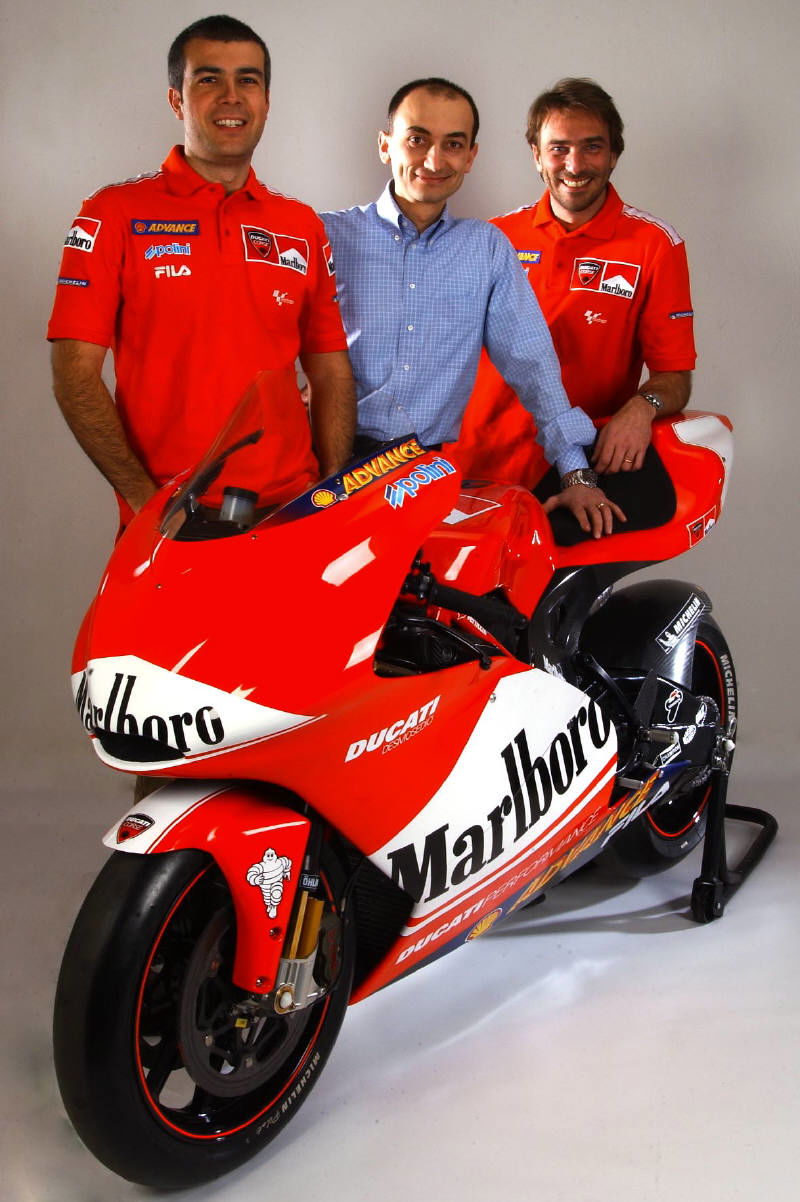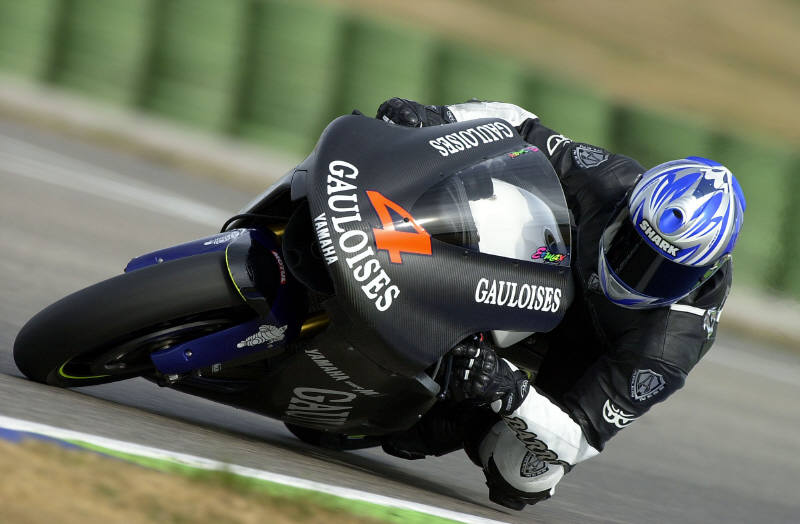Ducati take Superbike experience to GPs.
Ducati's 2003 GP machine has takes advantage of the technology developed through years of championship winning Superbikes - and although the GP rules require an all new 'prototype' design, that doesn't stop the development of proven ideas.
One example of this is the teams V4 engine, which although radically different to the V-twins of their past, still features the marques long-favoured 90-degree 'L' configuration, which the team says offers advantages that have contributed significantly to the factory's previous racetrack successes.

Ducati's 2003 GP machine has takes advantage of the technology developed through years of championship winning Superbikes - and although the GP rules require an all new 'prototype' design, that doesn't stop the development of proven ideas.
One example of this is the teams V4 engine, which although radically different to the V-twins of their past, still features the marques long-favoured 90-degree 'L' configuration, which the team says offers advantages that have contributed significantly to the factory's previous racetrack successes.
The layout has been proven to provide intrinsic engine balance, a fundamental consideration in an engine that revs at over 16,000rpm, with minimum vibration, good for mechanical efficiency and reliability.
The desmo system, designed by legendary Ducati engineer Fabio Taglioni, uses rockers to close as well as open valves, allowing particularly accurate valve operation, whatever the rpm. Desmo-driven valves also offer minimum power loss, especially in the low-to-medium rpm range, compared to other timing systems, especially pneumatic.
The Desmosedici engine is looked after by a brand-new Magneti Marelli CPU engine management/fuel injection system, which combines maximum performance with optimum fuel consumption.
Ducati's race technicians have been committed to fuel injection longer than any of their rivals and can also count on the experience of fuel and lubricant partner Shell in the search for improved all-round performance.
In terms of the chassis, Ducati will also be unique in GP racing: While other manufacturers race with variants of the ubiquitous aluminium beam chassis, the Desmosedici uses a tubular steel, trellis-type chassis, similar to that employed to great effect in World Superbike.
This concept allows excellent rigidity where required, as well as some flex, a useful factor in eliminating chassis 'chatter', a particularly complex problem in modern racing.
The Desmosedici continues Ducati's association with Michelin, the French tyre company that has won the past 11 500/MotoGP titles and the past nine World Superbike crowns, and also with Ohlins, the suspension specialists with whom Ducati have dominated World Superbike.
All in all, the Ducati Marlboro Team Desmosedici V4 looks like being a forceful new presence in motorcycling's hardest-fought arena - bringing a heady combination of experience, high technology and fervent passion to the ever-popular MotoGP World Championship.


